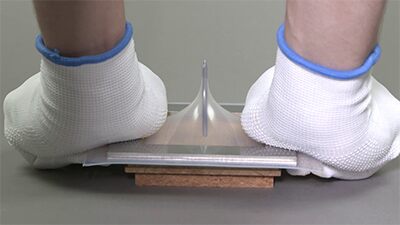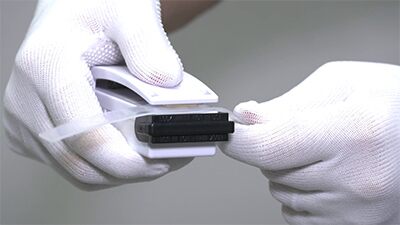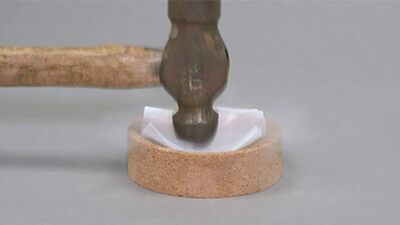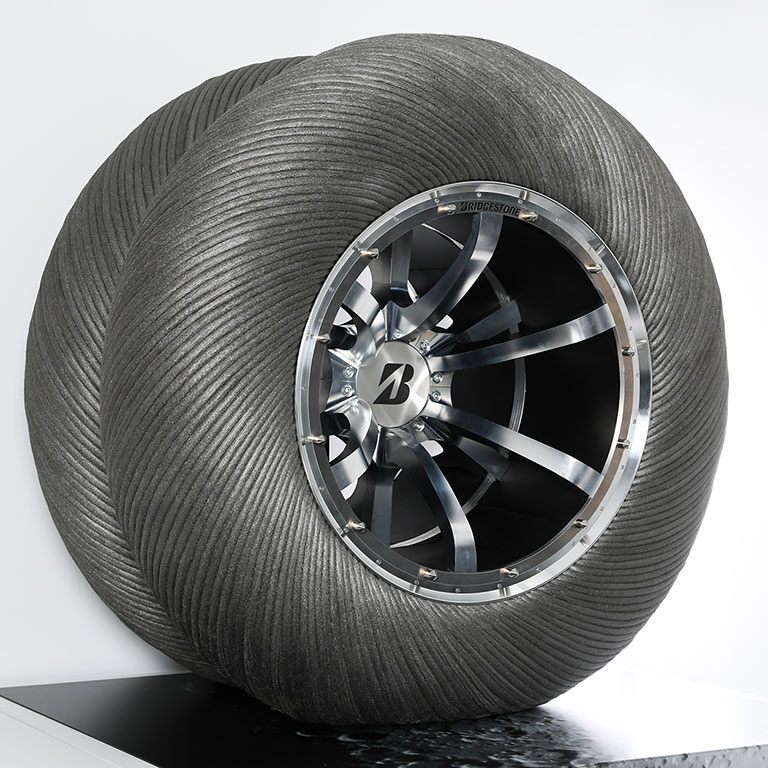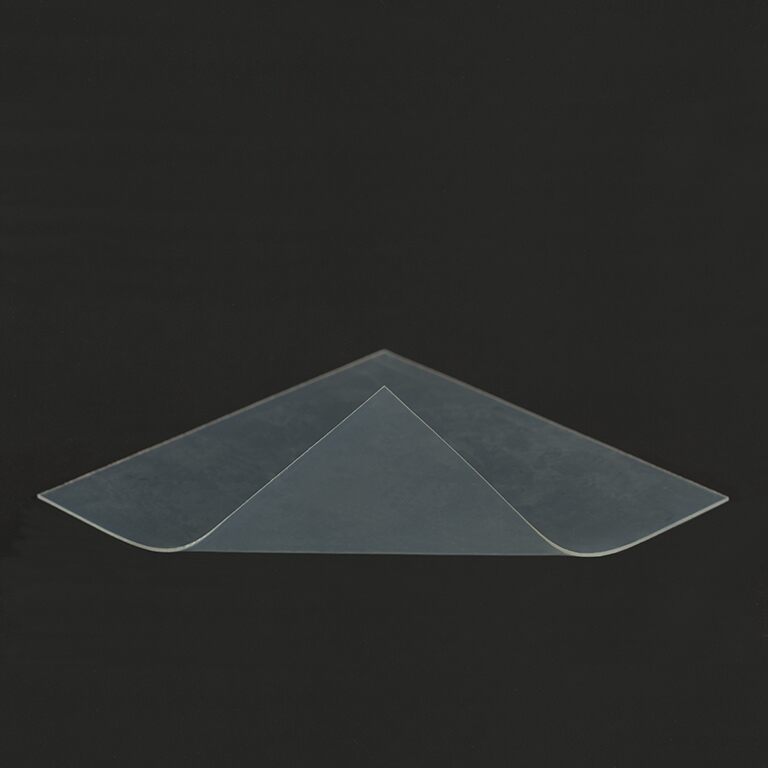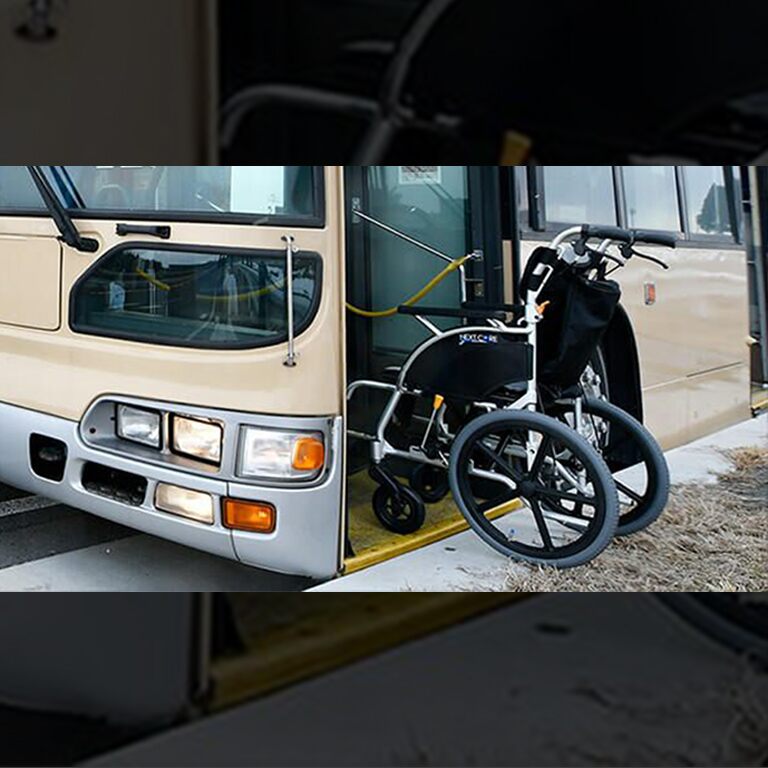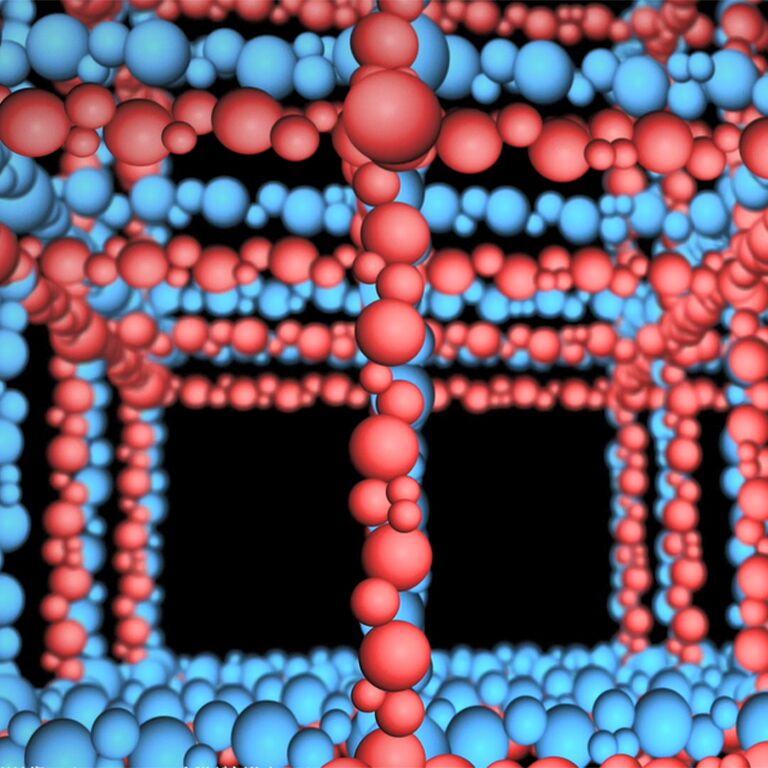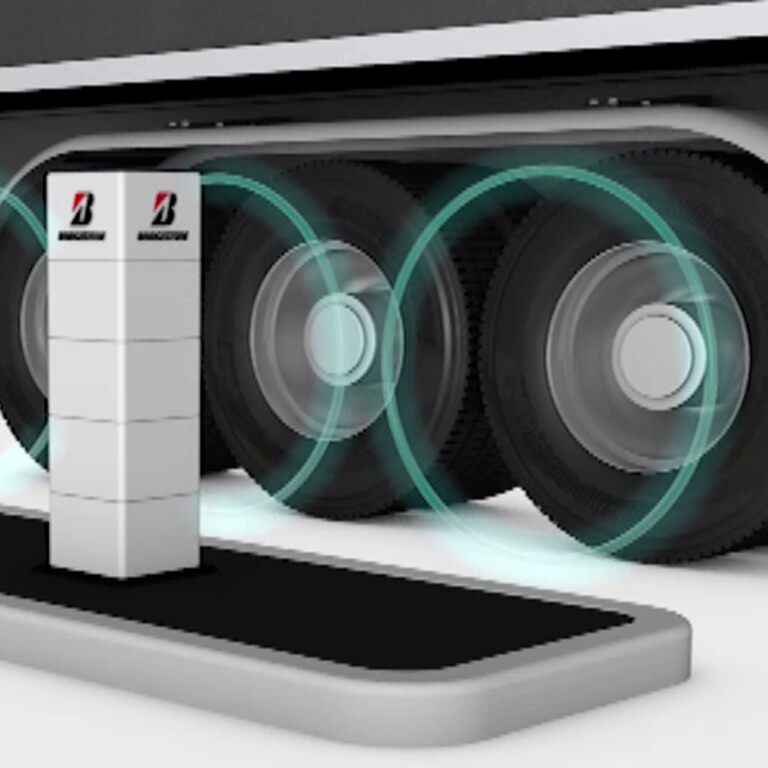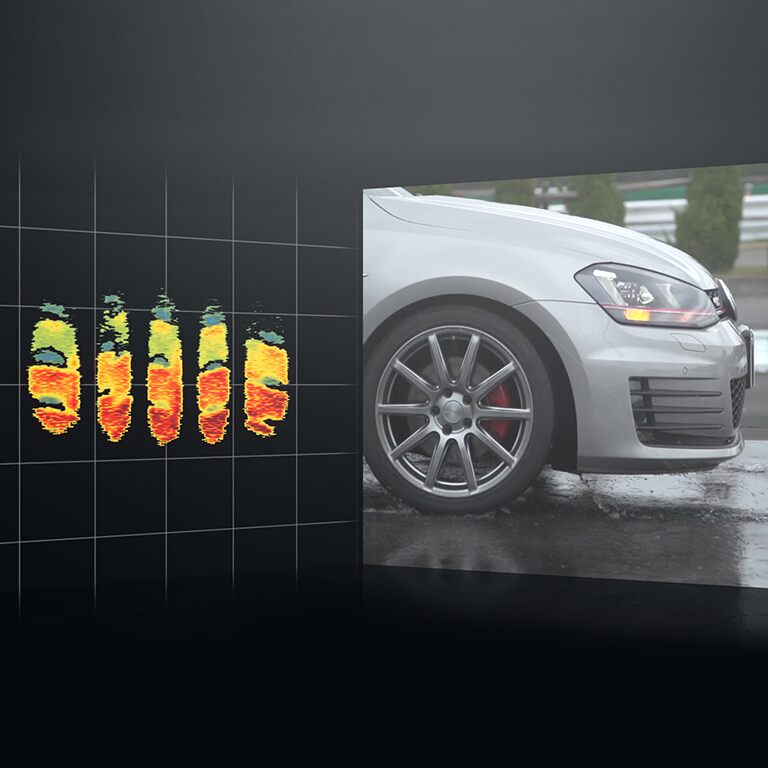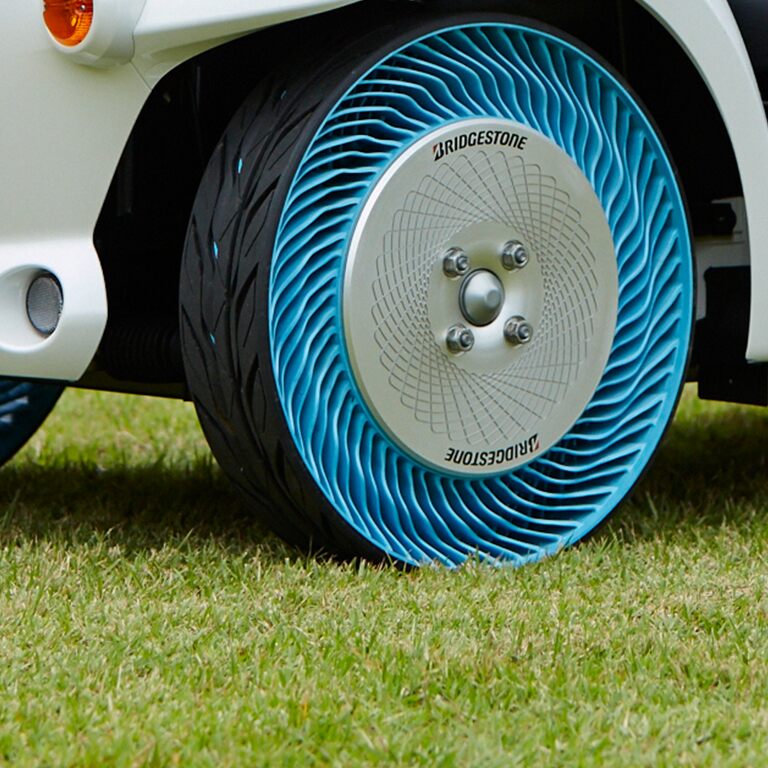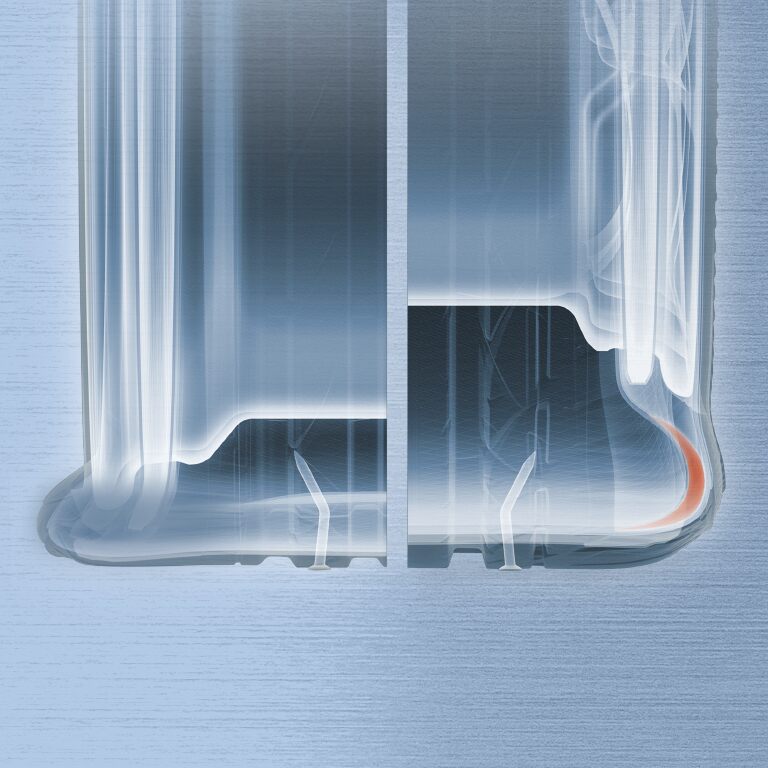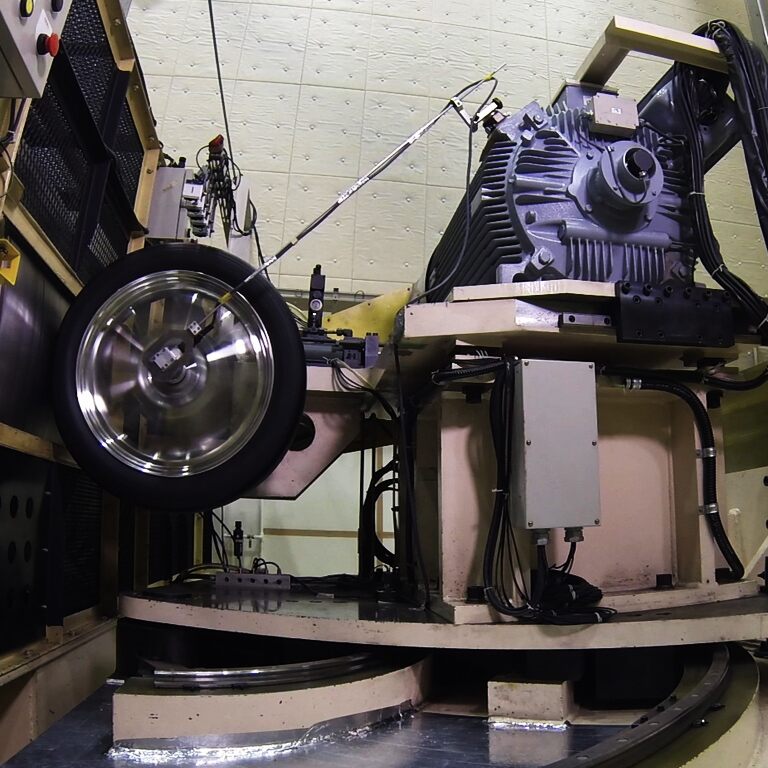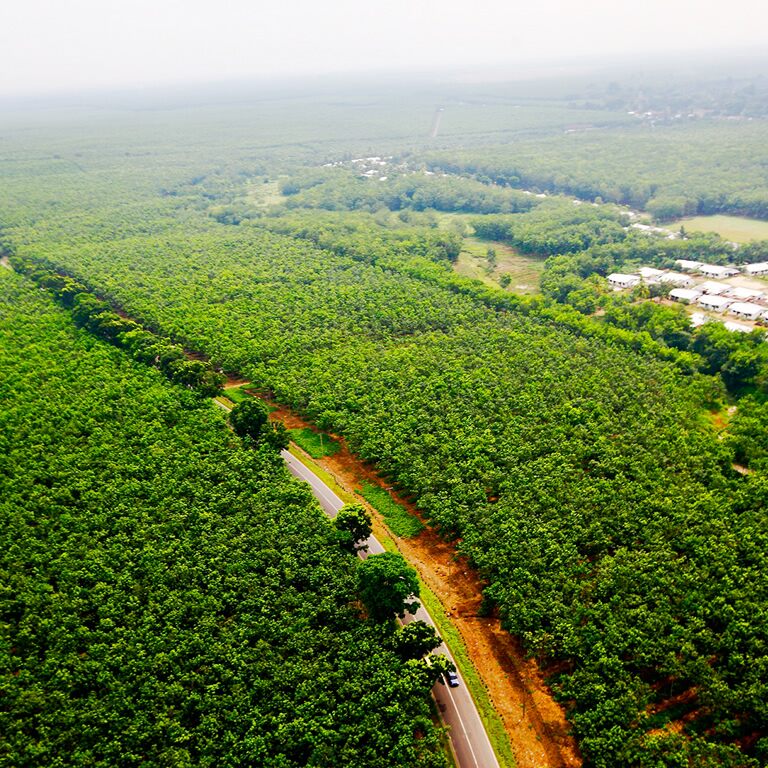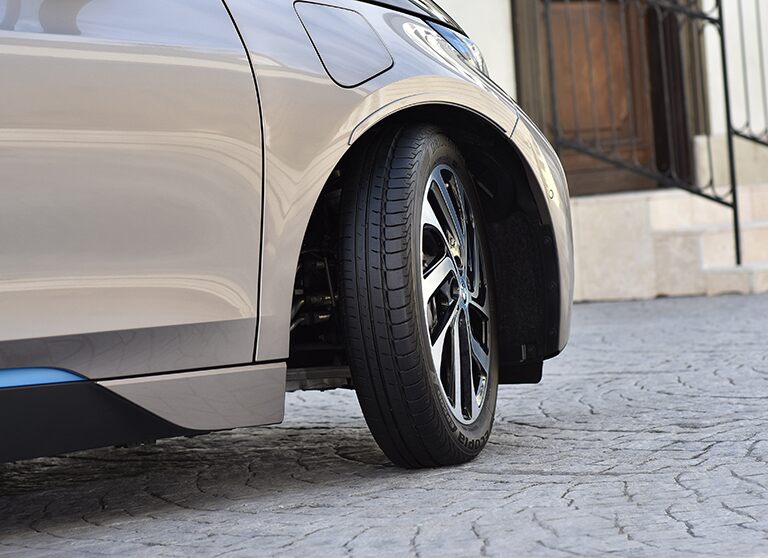
“SUSYM™” World-First Polymer that Combines Rubbers and Resins on the Molecular Level
Pliable Yet Durable Hybrid Material Combining Characteristics of Both Rubber and Resin
“SUSYM” is an innovative new material, which combines the traditional character of rubbers and resins. Bridgestone aims to utilize this material in tires as well as in a variety of other fields.
Tires are the only component of a vehicle contacting the road. No matter how vehicles may change to meet the demands of society, the primary role of tires remains focused on safely and securely supporting a vehicle’s operation. To achieve these attributes, tires need to deliver high elasticity and flexibility while also being able to absorb shocks to prevent damage. Rubber is an indispensable material in achieving this process.
The two types of rubber commonly used in tires are plant-derived natural rubber and synthetic rubber, produced from oil. Natural rubber surpasses synthetic rubber, for example in its resistance to tension, tearing etc. Conversely, as natural rubber is derived from plants, issues arise regarding the quality and quantity of rubber that can be produced, as well as the long-term stability of supplies. Synthetic rubber boasts benefits in the form of superior fuel efficiency and cold resistance. However, synthetic rubber is less durable than natural rubber. While using contemporary technologies, synthetic rubbers cannot serve as an alternative for natural rubber.
Seeking a means of developing an innovative, next-generation rubber that can surpass natural rubber and contribute to the realization of a sustainable society, Bridgestone embarked on a long journey to produce a material with performance exceeding natural rubber through chemical processes. This journey led to the development of “SUSYM”, an innovative material produced by combining most commonly used rubber and resin component, which even surpasses natural rubber.
Proprietary Bridgestone Technologies Employed in “SUSYM”
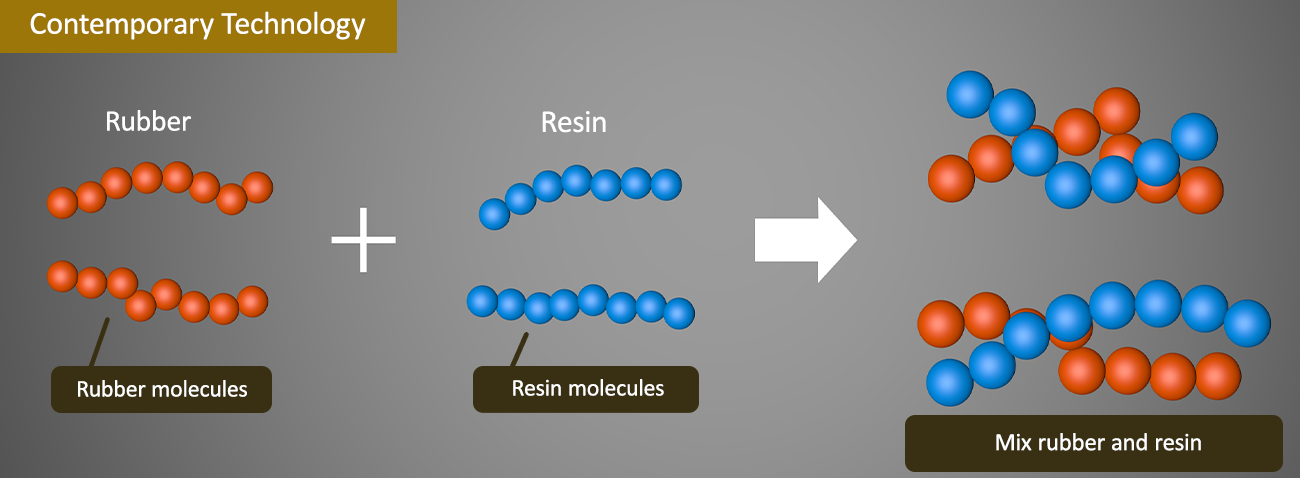
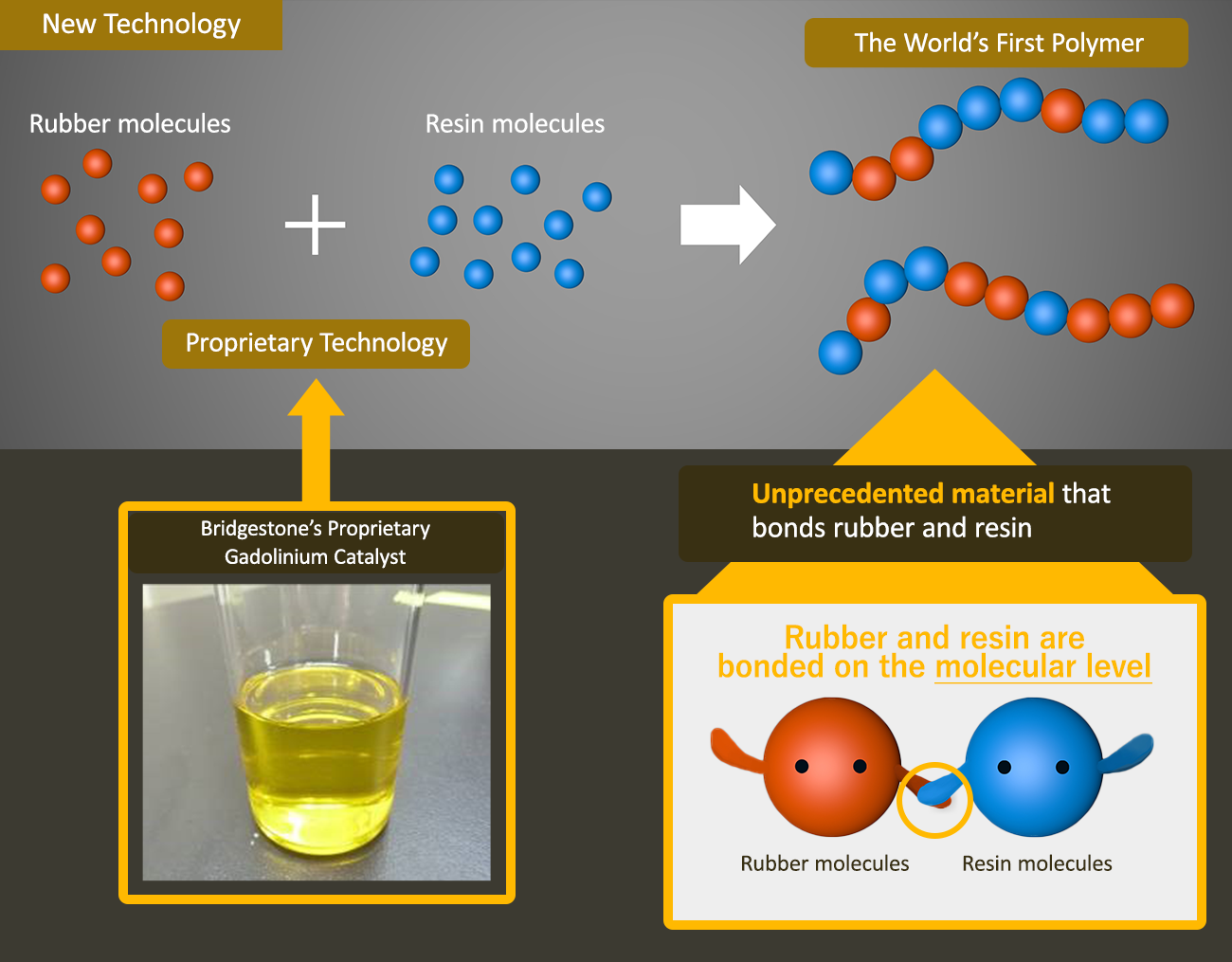
Most substances are comprised of molecules and formed from particles known as atoms. Chains of molecules form both rubbers and resins. Until now, it has been difficult to bond rubber with resin on the molecular level (to make chains comprised of red and blue balls as show in the picture above). However, Bridgestone succeeded in bonding rubber and resin molecules by utilizing a proprietary substance used as a catalyst to stimulate a chemical reaction. This process led to the creation of “SUSYM”, an innovative new material that features both the pliability of rubber and strength of resin.
Characteristics of “SUSYM”
“SUSYM” shows a significant character, which no other rubbers can shows:
Outlook for “SUSYM”
Bridgestone has created a concept tire that symbolizes the character of “SUSYM” and Bridgestone’s vision for tires in the future.
Conventional tires are made from rigid wheel in the center part, and a flexible black rubber (tread, side part). With “SUSYM”, it is possible to produce this entire tire (wheel and rubber part) from this single material. As seen in the concept tire, rigid wheel part (silver colored) is made from resinous “SUSYM”, and flexible tread part (red colored) is made from a rubbery “SUSYM”.
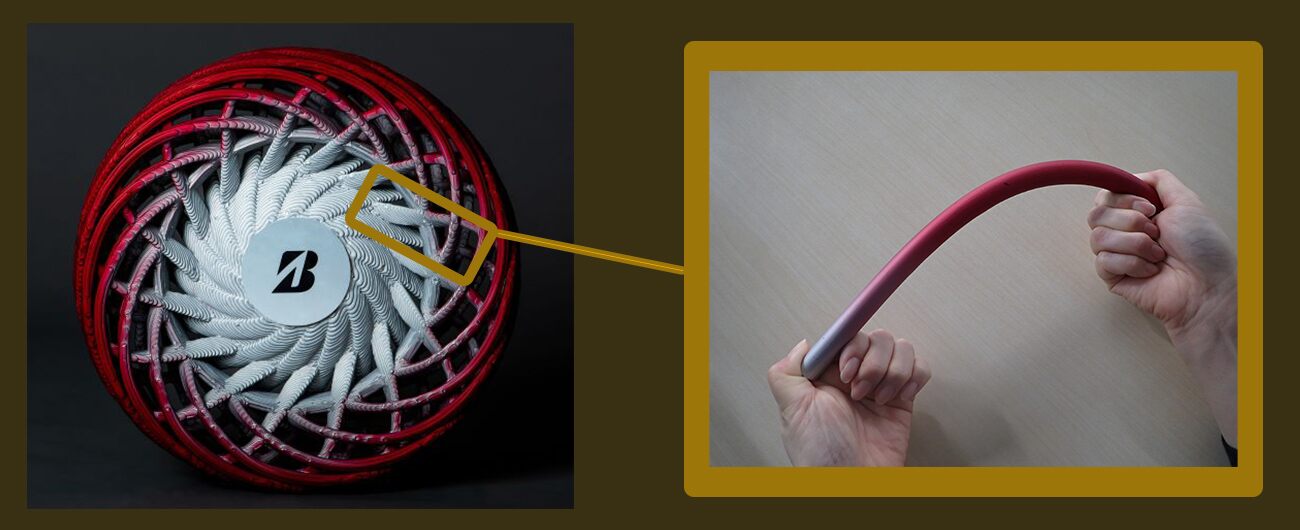
Design is based on the motif of traditional Japanese bamboo crafts, this tire expresses the seamless integration of the differing characteristics of rubber and resin in “SUSYM”. In this manner, the use of “SUSYM” resulted in the creation of a tire with a design, which no one had seen before.
In addition to its characteristics such as freely controlled rigidity and pliability, “SUSYM” can be expressed in a variety of forms, such as sticks, sheets, and powders. Bridgestone sees the potential for this material to be used in a diverse range of fields.





